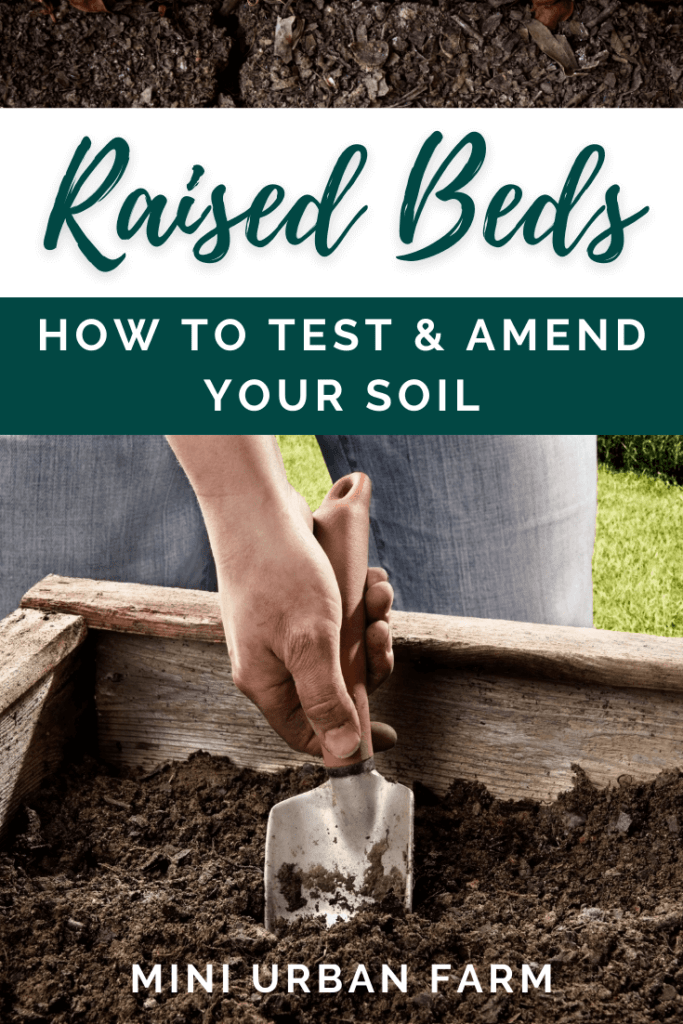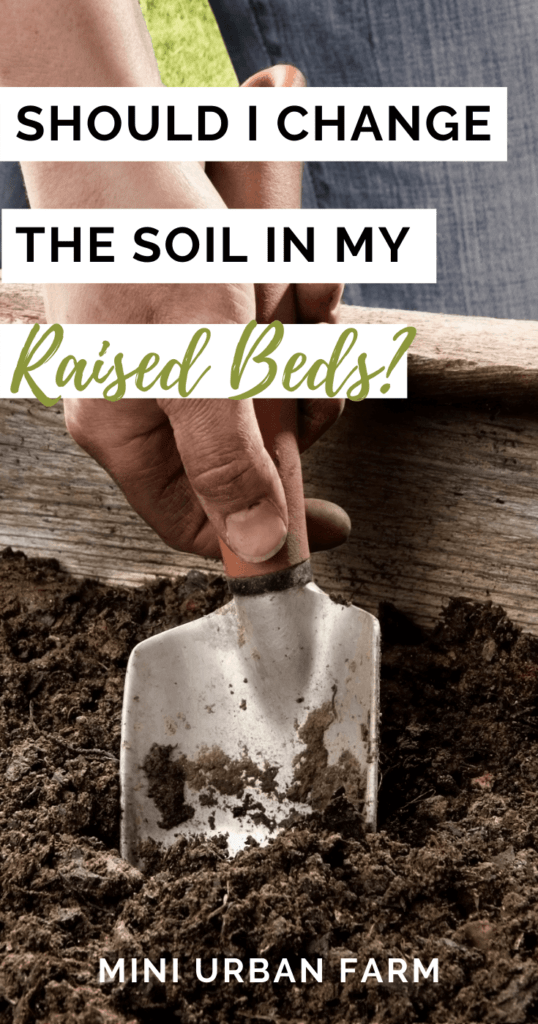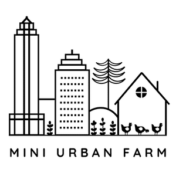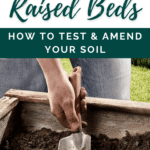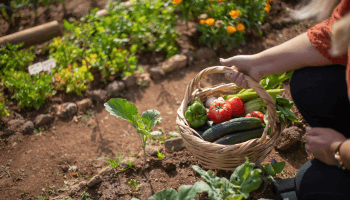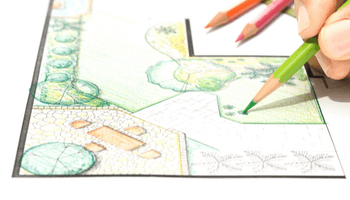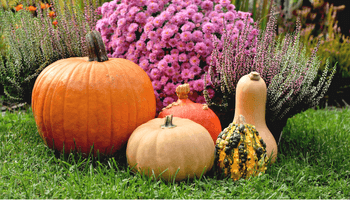So I get a lot of questions from new gardeners about the differences between gardening in raised beds versus in-ground gardening. The most interesting question I received lately was from someone who thought that every season I was removing all the soil from my raised beds and replacing it with new soil. His question was – do you have to change the soil in raised beds?
No, you do not have to change the soil in raised garden beds. You should, however, amend the soil with compost and other nutrients before the beginning of each new season. And also when you have identified any plants that need more nutrients.
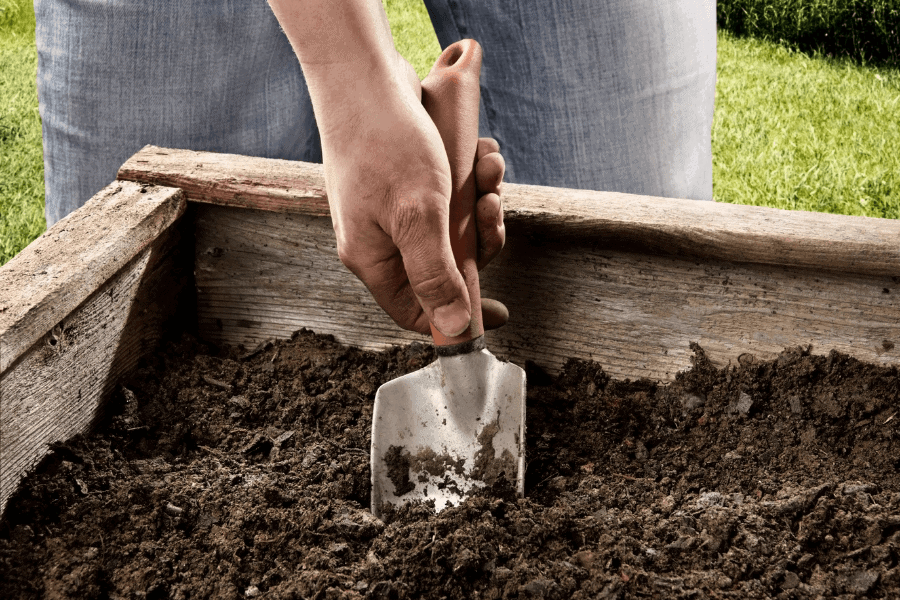
Disclosure: This post may contain affiliate links. If you purchase a product through one of our affiliate links we make a small commission from the sale at no extra cost to our readers.
What’s in a raised bed?
So by saying that you don’t have to change out the soil for a raised bed, it inevitably makes you wonder – well, why not?
And the answer to that is simple.
Your raised beds should already be filled with high quality raised bed soil. This would include peat moss, compost, perlite, and other soil amendments you’ve added over time.
So the base soil is there, but over time plants pull their nutrients from the soil.
This depletes the soil of nutrients – which means you have to replace them as time goes on.
That is, if you want your plants to do well!
Another factor to consider is erosion.
Over time, soil tends to erode and you will notice that the soil in your garden beds gets lower and lower. The soil is not disappearing, even though it can seem like that – it’s eroding.
In order to combat this, additional soil must be added – but you can add it on top of the existing soil.
Usually when people add in soil at the beginning of a new season, they just add a top layer of compost – not more raised bed mix. Although if your soil is less than a foot, I would recommend adding in more raised bed mix to your beds.
The Importance of Compost for Soil
Compost is an integral ingredient to gardening and should be added to your soil before the beginning of each season in order to add in more nutrients and provide a good base for your new seedlings!
You can even make your own compost at home by using a small compost bin and gathering up some of the materials below:
- Vegetable scraps
- Fruit scraps
- Eggshells
- Coffee grounds
- Grass and plant clippings
- Newspaper
- Manure from chicken and rabbits
- Cardboard
- Dry Leaves
- Straw
- Sawdust but the wood should be untreated
- Chopped wood and bark chips
Do not add in any of the items below to your compost. These items tend to repel earthworms which are essential for the garden. They can also make your compost smell bad and attract unwanted pests and animals:
- Garlic
- Onions
- Citrus peels
- Diseased plant materials
- Weeds that would seed
- Dairy products
- Treated wood pieces or sawdust
- Items which contain meat, grease or oil
- Cat or dog faeces
Making your own compost
The first step is to combine the green materials and brown materials – also known as nitrogen (green) and carbon (brown).
The brown material consists of the fallen leaves, sawdust and other wooden materials, dry leaves, plant and tree material, straw and hay.
These dried materials help to add carbon content to the compost.
Green items are usually the kitchen leftovers like fruit and vegetable scraps, coffee grounds, and rabbit and chicken manure.
These materials add nitrogen content to your compost.
For high-quality compost, your compost should consist of three parts brown material and one part green materials – but there’s no need to be exact on this rule!
If the compost looks too dry and isn’t decomposing, add more green material to make it moist and if it looks too wet then add more brown material or aerate it more often.
It’s important to sprinkle a little water on your compost pile to give it a spongy consistency.
But do not overwater your compost or else the microorganisms in the compost pile will drown due to waterlogging.
This would not compost your pile but rather rot your compost pile.
Also, be sure to turn your compost regularly to help keep the pile healthy.
Over time, the pile will heat up and break down the organic materials – leaving you with a heap of black gold, ready to be used in your raised beds.
And check out this video if you want to see how I make my homemade kitchen compost!
Psst…want to fast track your garden? Get access to my FREE gardening resource library and start maximizing your garden today!
Soil Amendments in Raised Beds
To improve the quality of raised beds soil amendments can be added to the soil.
Usually these amendments are added at the beginning of each season, when transplanting your seedlings, and if you notice discoloration due to lack of nutrients.
A few organic soil amendments which improve the soil quality in raised beds are:
- Bone meal
- Blood meal
- Compost
- Coir
- Grass clippings
- Cornmeal
- Lava sand
- Straw
- Alfalfa meal
- Kelp meal
Which amendments should I use?
Apart from sunlight and moisture, the most essential ingredient which determines whether gardening is a success is soil. The soil should be able to provide the plants with the nutrients it requires or else they won’t thrive.
The main nutrients that plants need are phosphorus, nitrogen, and potassium – these are fundamental for plant growth.
However, since different plants need more or less of each of these, the soil often gets depleted of one of these more or less than the others.
If you do not add these lost nutrients back into your soil, your plants will show signs of lack of nutrients. These will appear in the form of plant edges dying, plants appear to be burning, discoloration of plant leaves, and lack of fruiting.
That is why soil testing after each season is so important.
You can always buy an at-home soil testing kit which is super easy to use. These will tell you the amount of nitrogen, phosphorus, and potassium in your soil. That way you can find the appropriate amendments to add back into your beds.
PH soil testing
Another type of soil testing which is super important is PH testing.
This will tell you the PH levels of your soil, which might be too acidic or too alkaline for growing certain types of plants.
Learning the PH levels of your soil will then allow you to add in amendments you need in order to grow the foods that you like!
You can get a PH testing kit to test your soil, or you can do this simple DIY PH testing on your soil.
What you need the following ingredients for testing the alkalinity of the soil:
- 2 tablespoons of soil
- ½ cup vinegar
If you see effervescence then the soil is alkaline. Alkaline soil can be amended by treating the soil with ground sulfur.
To check the acidity of the soil you need:
- 2 tablespoons of soil
- ½ cup baking soda
If effervescence is observed then the soil is acidic. Acidic soil can be amended by adding finely ground limestone.
If nothing happens in both the tests then the soil pH is neutral.
Once you know what the PH level is for your soil, you can determine which amendments to add, if any, so that you can grow whichever plants you like.
Most vegetable plants need a PH level anywhere between 5.5-7.5, but the specific levels vary by plant.
Can old raised bed soil be reused?
Yes, raised bed soil can be reused. Before reusing, use a spading fork to loosen the old soil and break the large clumps of soil. Remove all the dead plants and roots from the soil. Amend the soil with at least 2 inches of high-quality compost. Once done, check the pH of the soil so that you would know if the soil requires any other nutrients.
Is it all right to water plants during the night?
No, watering plants at night is not recommended as it is not in the best interest of the plant’s health or the leaves. This is because at night the leaves remain wet for a longer time without sunshine. Therefore, these wet and damp leaves become vulnerable and develop fungus which results in plant decay.
What is the outcome of burying an egg in the raised bed soil?
Eggshells are high in calcium. When an egg is buried in the soil it would compost and provide calcium to the roots which can put an end to root rot. However, if the soil is acidic and has a high nitrogen content it would prevent the calcium and other nutrients from reaching the roots and the plants. The egg does provide an end to the calcium problem for the plant to blossom properly but only if the soil composition is not high in nitrogen content.
At the end of the day, it is not necessary to change the soil in your raised garden beds. But amending your soil is very important after each growing season. Be sure to test your soil for nutrients and pH levels to see which amendments you might want to consider. And always pay attention to any signs that your plants are showing that can signal a lack of nutrients!
I hope this was super helpful! And for more gardening resources, get access to our free gardening resource library! It will help you fast track your garden and it only takes 5 seconds!
Pin Do you have to change the soil in raised beds!
